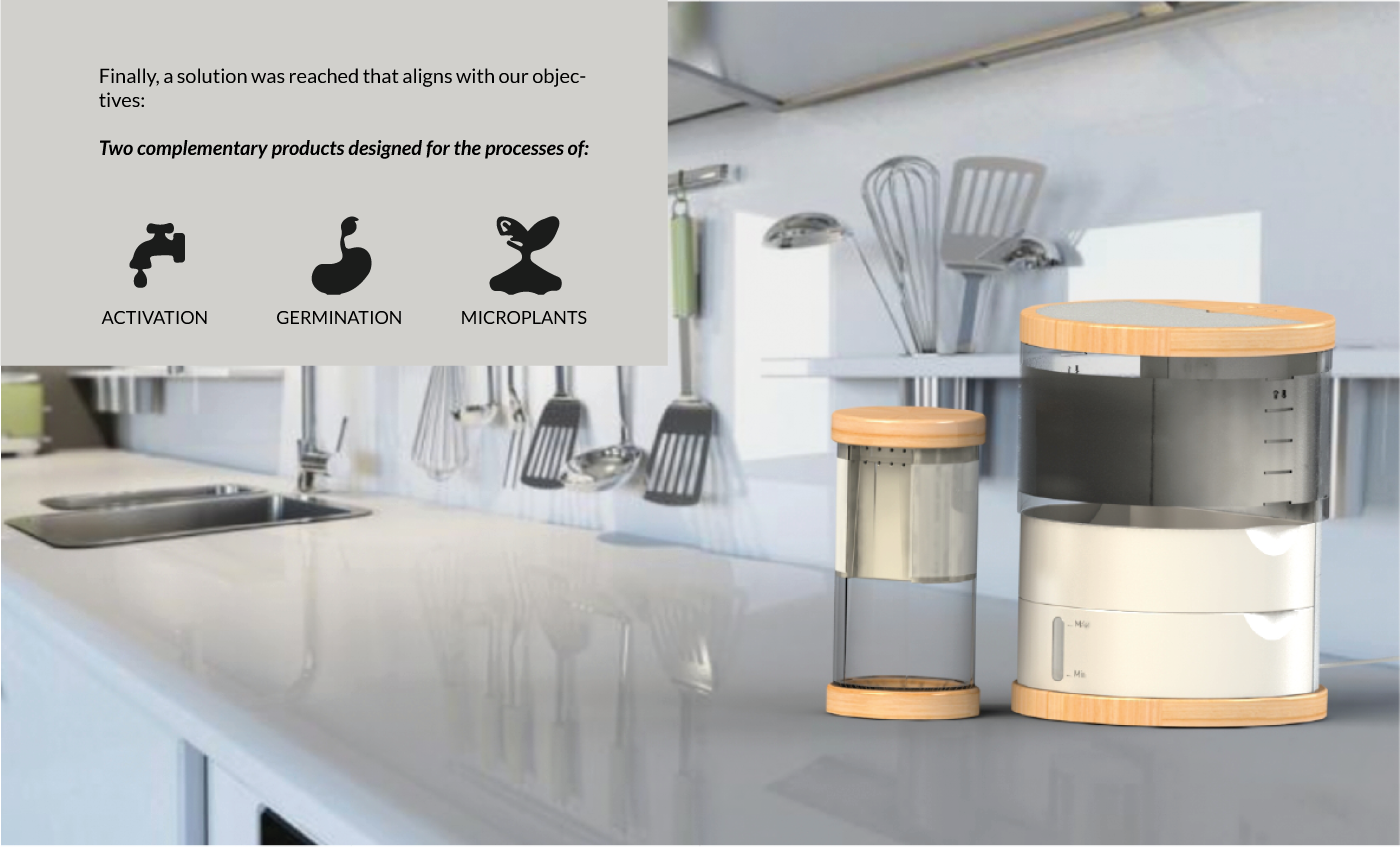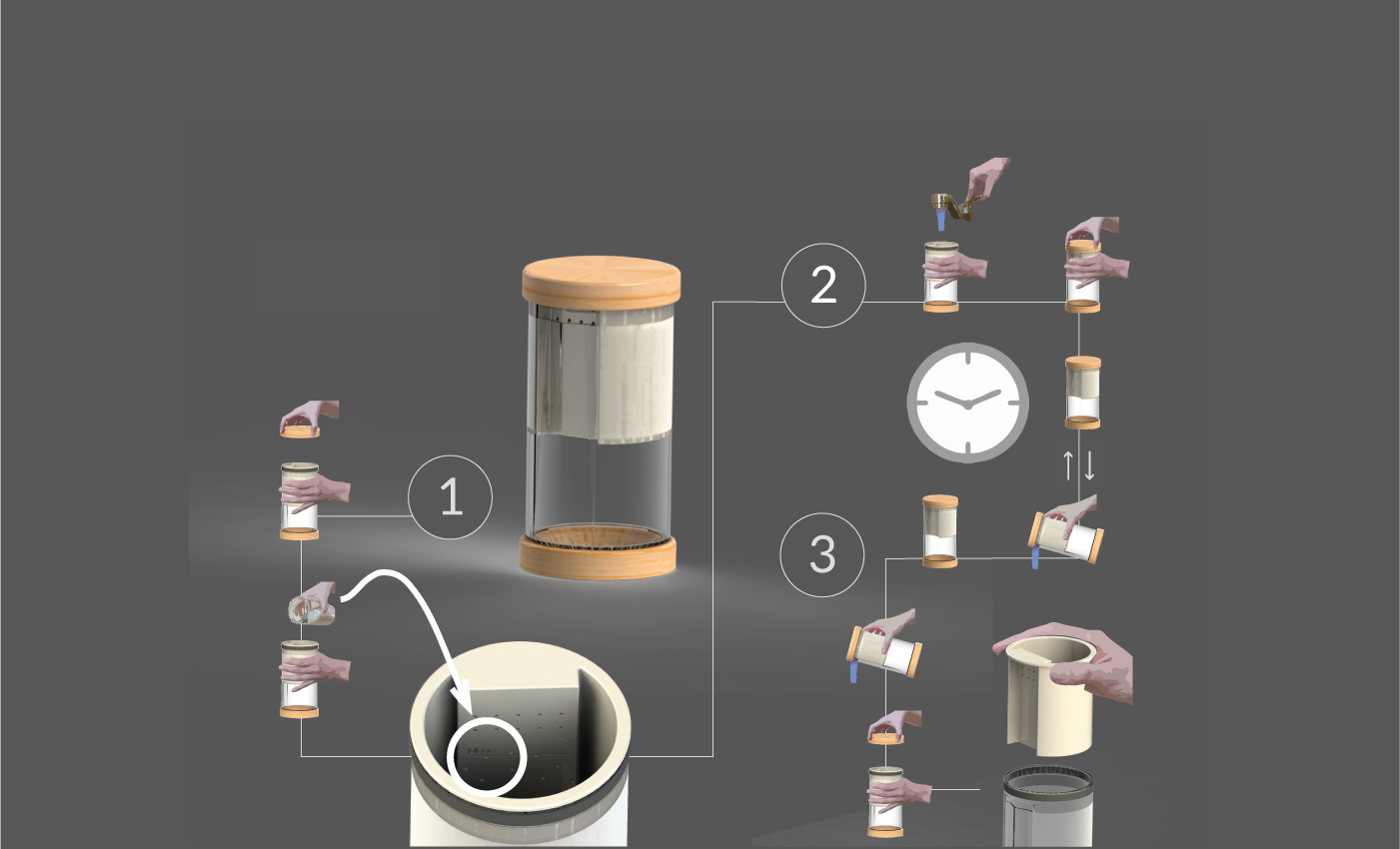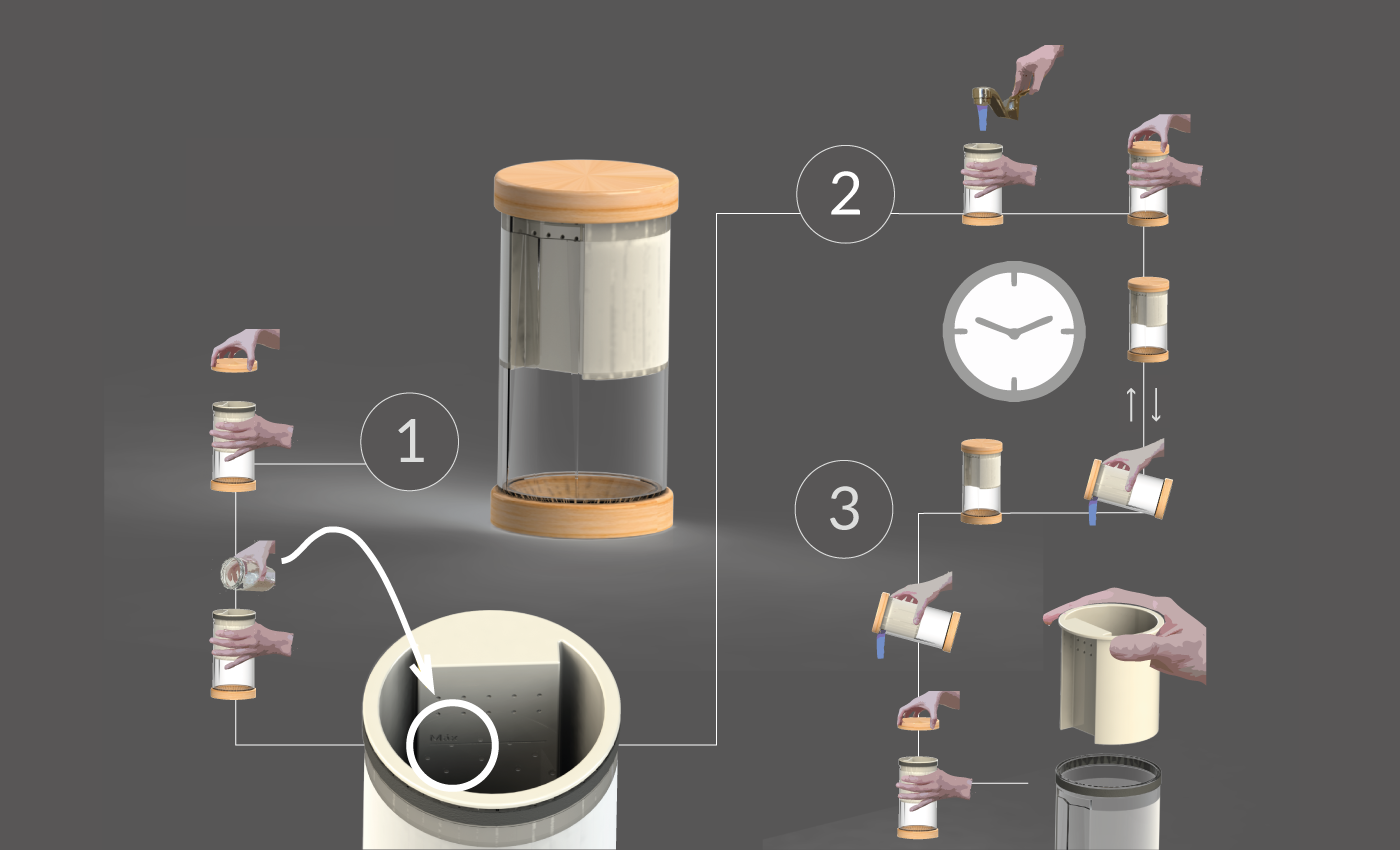Final work of my bachelor's degree in Industrial Design
Universidad Nacional del Litoral
The thesis explored consumption patterns of legumes and cereals in Argentina, correlating them with eating habits to enhance intake. It comprised stages: understanding influencing factors, conceptualization of product, and detailed development involving research on materials, production processes, suppliers, and the competitive market.
Carla Beherens/ Paula A. Velazquez
TEAM
TIMELINE
14 months
“Devices for the Consumption of Cereals and Legumes in the Domestic Setting”
design oportunity
Project stages
-
Definition of key concepts and the theoretical framework (user/context). Market analysis. Development of the Product Development Strategy (PDS).
-
Ideation, conceptualization and search for proposals.
-
Development of the selected proposal (general description, context of use, sequence of use). Synthesis and composition of the product. Definition in detail.
research
Our fieldwork included interviews, surveys, participation in workshops and events, to better understand users and their environments.
With the information gathered and the design thinking methodologies, the potential users and the context were defined.
Direct user
Age: 25-35 years.
Interested in diet-health effects.
Consult nutritionists.
Concerned about food industry influence.
Use networks for recipes/knowledge.
GOLS
Balance your diet. Incorporate unprocessed foods.
MOTIVATIONS
Share and discuss your experience. Share the routine.
FRUSTATION
Users may feel disoriented due to the unfamiliar techniques for manipulating legumes and cereals, stemming from the lack of knowledge about preparation time, recipes, and nutritional values.
5% of the population follows a plant-based diet.
Familiar with activation, germination, and microgreen processes.
Demanding consumers seeking diet diversification/enrichment.
Incorporate established methods/techniques.
Indirect user
Considerations
The user is adopting new dietary habits, including meal preparation for multiple days. They have some restrictions, preferring reliable and familiar options like lentils, chickpeas, rice, and peas found in supermarkets or health food stores, with a growing interest in organic products.
Users typically live alone or with one/two people in small, integrated living spaces like apartments or houses with combined kitchen, dining, and living areas. These spaces are compact with electrical outlets available.
There are two moments in the kitchen. One where everything is organized and the other when the cooking action occurs, it should be noted that at this time appliances are deployed, reducing the space.
Context
Context limits
Social: Little familiarity. Unattractive when generating recipes.
Advertaising: Ultra-processed products. Educational: Little/no promotion of healthy habits. Devaluation of the physiology of the body.
Habits of an urbanized society: less time spent preparing food.
After defining concepts and considering contextual constraints and user requirements, multiple proposals were explored.
We worked with the “Brainstorming” tool; the tool helped us generate new ideas that were later taken into account to improve our proposals.
creative

proposal in
details
PRODUCT A
It was designed for the ACTIVATION process that includes two stages:
Soaking: Submerge legumes/cereals in water, allowing impurities to release and accumulate.
Filtering: Drain and refill water 2-3 times until clean, aided by the included strainer.

MODE OF USE
PRODUCT B
Product B facilitates germination and microplant processes to transform legumes/cereals into ready-to-eat food without cooking.
GERMINATION: Feed is irrigated every 3 days in a closed, light-blocking container, maintaining ideal humidity and temperature for sprout development.
MICROPLANT: Seeds are sown in a perforated pot with soil/spores, automated watering cycles for 6 days provide minerals and humidity for growth without needing a microclimatic shelter, thanks to the pot's drainage system.
FUNCTIONING
Water irrigation is automated.
GERMINATE: 3-day cycle. Press MODE for white light and sound. 100ml irrigation every 8 hours. Light off at end with sound.
MICROPLANT: 6-day cycle with 72-hour break. Press MODE for light and sound. Daily 100ml irrigation. Cold white LED on after 72 hours.

MODE OF USE
The products introduce a new gastronomic solution, enhancing the role of legumes/cereals in the Argentine diet, increasing the nutritional value of these foods. Both products prioritize the prominence of legumes/cereals, highlighting the importance of water in their revaluation process. In Product A, pressurized water cleans and hydrates, eliminating impurities. In Product B, the water imitates rain, providing hydration to the Legume/Cereal.
Synthesis of products
Reflection
Participation in this graduation thesis process gave us the opportunity to choose a topic of great interest to us. Initially we focused on “Nutritional deficiency in the diet and its effect on health”. Through reflective and critical research we managed to complete the graduation thesis subject with the design opportunity.
We applied the methodologies and knowledge acquired throughout our academic career, culminating in the creation of two products that we were able to validate both in the theoretical and practical fields.











